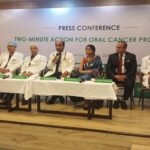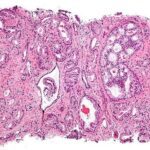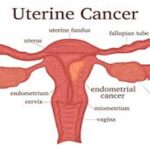“The primary risk factors for breast cancer are being female and older age. Other potential risk factors include genetics, lack of childbearing or lack of breastfeeding, higher levels of certain hormones, certain dietary patterns, and obesity. Recent studies have indicated that exposure to light pollution is a risk factor for the development of breast cancer.”
New Delhi, October 08, 2018:
Symptoms & Signs
Lump, thickening different from the other breast tissue, one breast becoming larger or lower, a nipple changing position or shape or becoming inverted, skin puckering or dimpling, a rash on or around a nipple, discharge from nipple/s, constant pain in part of the breast or armpit, and swelling beneath the armpit or around the collarbone. Pain is not a reliable symptom, usually occurs in late stage after involvement of nerve roots.
- Certain breast cancer risk factors are related to personal behaviour, such as diet and exercise. Other lifestyle-related risk factors include decisions about having children and taking medicines that contain hormones.
- Drinking alcohol is clearly linked to an increased risk of breast cancer. Those who have 2 to 3 drinks a day have about a 20% higher risk compared to women who don’t drink alcohol.
- Being overweight or obese after menopause increases breast cancer risk. Having more fat tissue after menopause can raise estrogen levels and increase your chance of getting breast cancer.
- Evidence is growing that regular physical activity reduces breast cancer risk, at least 150 minutes of moderate intensity or 75 minutes of vigorous intensity activity each week (or a combination of these), preferably spread throughout the week.
- Women who have not had children or who had their first child after age 30 have a slightly higher breast cancer risk overall. Having early pregnancies reduces breast cancer risk. But for a certain type of breast cancer known as triple-negative, pregnancy seems to increase risk.
- Breastfeeding may slightly lower breast cancer risk, especially if it’s continued for 1½ to 2 years.
- Hormone therapy during reproductive age and after menopause increases the risk of breast cancer as studies suggested.
- Oral contraceptives: Most studies have found that women using oral contraceptives (birth control pills) have a slightly higher risk of breast cancer than women who have never used them.
- Combined hormone therapy (HT):Use of combined hormone therapy after menopause increases the risk of breast cancer.
- Few studies also suggested that use of breast implants may increase the risk of breast cancer.
Safe treatment modes
The breast cancer treatment options are :
- Surgery- Most women with breast cancer will have some type of surgery to remove the tumor. Depending on the type of breast cancer and how advanced it is, mainly surgery are of two types :
- Mastectomy (Complete removal of breast)
- Breast conserving surgery (Removal of tumor with adequate margins, breast remain intact)
With advancement in medical science and cancer treatment approaches, organ preservation plays a very important role in present Oncology management strategies. Old thoughts of removing the whole breast with axillary clearance in all cases of breast cancers have drifted to breast conservation approaches in early stage breast cancers, basically in stage I, II. Breast conservation therapy includes breast conservation surgery (which includes removal of tumor with a negative margin and Sentinel node biopsy/axillary clearance) and radiotherapy. Radiotherapy is essential after breast conserving surgery as it reduces the risk of cancer recurrence, and improves survival. Chemotherapy, hormone therapy depending on hormone receptor status, biological therapy if indicated.
- Radiation therapy – Advanced high energy X-ray Linear accelerators are available now a days to deliver highly precise radiation therapy to the tumor with lesser side effects to critical structures (mainly Heart, Lungs, contralateral breast, etc.) lying near to target area with advanced techniques like IMRT, IGRT, VMAT, breath holding and respiratory gating techniques.
- Chemotherapy for Breast cancer -Drugs used to treat breast cancer are considered chemotherapy because they can reach cancer cells almost anywhere in the body. They can be given by mouth or put directly into the bloodstream, depending on the type of breast cancer.
- Hormone Therapy – Hormone therapy is often used after surgery (as adjuvant therapy) to help reduce the risk of the cancer coming back. It is usually taken for at least 5-10 years. It can also be used to treat cancer that has come back after treatment or that has spread to other parts of the body.
- Targeted therapy : Trastuzumab for HER-2 Neu positive cases, etc.
Breast Cancer Screening
- Breast cancer screeningmeans checking a woman’s breasts for cancer before there are signs or symptoms of the disease.
- Although breast cancer screening cannot prevent breast cancer, it can help find breast cancer early, when it is easier to treat.
- The recommendations for breast screening in women after the age of 40 years.
- A number of screening tests have been employed, including clinical and self breast exams, mammo-sonography, magnetic resonance imaging, and genetic screening.
- A clinical or self breast exam involves feeling the breast for lumps or other abnormalities.
- Mammo-sonography is a common screening method, since it is relatively fast and widely available in developed countries. Mammography is a type of radiography used on the breasts followed by ultrasound correlation.
- Magnetic resonance imaging(MRI) has been shown to detect cancers not visible on mammograms. A negative MRI can rule out the presence of cancer to a high degree of certainty, making it an excellent tool for screening in patients at high genetic risk or radiographically dense breasts, and for pre-treatment staging where the extent of disease is difficult to determine on mammography and ultrasound.
- Genetic testing like BRCA-1 or BRCA-2 oncogene mutations does not detect cancers, but may reveal a propensity to develop cancer. Women who are known to have a higher risk of developing breast cancer usually undertake more aggressive screening programs
Futuristic new advent in breast cancer treatment
- The evolution of breast cancer treatment has become a revolution thanks to precision medicine, improved screening, and a move to more refined surgical techniques. This momentum will continue in as advances such as immunotherapy, nipple-sparing surgery, and gene therapy continue to transform the field. One of the innovative surgeries that we can offer patients here are nipple-sparing mastectomies with direct implant-based reconstruction.
- We are seeing very promising advances in several directions, such as in systemic therapies where the focus is moving to drugs that target abnormalities in the cancer cell that are unique to each patient. We are also looking to provide individualized treatment for breast cancer patients, which means less chemotherapy, less surgery and less radiation.
- Molecular immunotherapy is the next frontier of cancer treatment. Immunotherapy is just one of several individualized, personal medical approaches to combating cancer, and it holds promise for many patients, particularly those who struggle with severe side effects from conventional drug, radiation and hormone therapies. Some immunotherapies are monoclonal antibodies, a laboratory-created protein that can bind to substances in the body and be used to deliver drugs or other substances directly to cancer cells without harming healthy cells.
- Advances in radiation therapy technologies over the past several decades and the increased use of hypo-fractionation—where radiation is given in larger doses across fewer sessions—have afforded patients more convenient treatment options.
- Targeted therapy, Gene therapy: Targeted therapies are a group of drugs that specifically target gene changes in cancer cells that help the cells grow or spread. For HER-2 Neu positive breast cancer patients requires Trastuzumab. Olaparib (Lynparza) is now being used to treat women with BRCA mutations who have metastatic, HER2-negative breast cancer and who have already gotten chemotherapy. Other PARP inhibitors are also being studied.
The author of this article is Dr. (Prof) Santanu Chaudhuri- Chairman Centre for Oncology & HOD, Clinical Oncology, Nayati Medicity, Mathura







